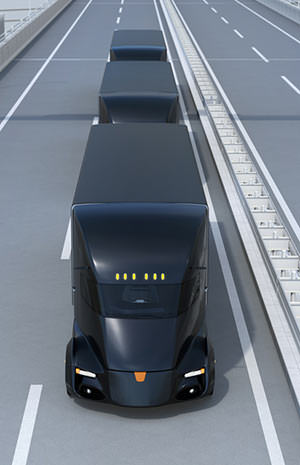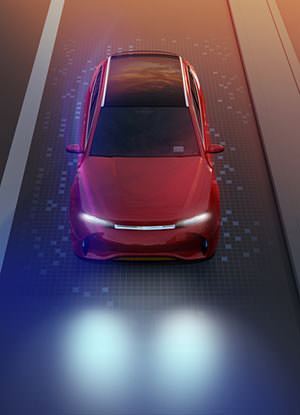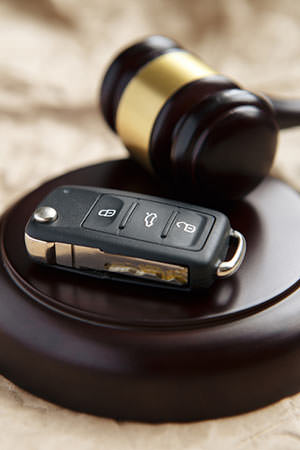victims for over 25 years.
Autonomous Cars in Denver: Are You Worried About Self-Driving Car Accidents?
Unless you’ve been under a rock (which may be the safest place to be right now), you’ve heard of autonomous cars. These “vehicles of the future” are fast becoming the vehicles of NOW. It seems like everyone from the Average Joe/Jane to Amazon are thinking about the impact that self-driving cars might have on their lives or business plans. Get work done while you drive! Eliminate road rage! Reduce accidents! Parallel park like a pro! Deliver packages more efficiently!
What a dream!
But of course, we all knew that there would be glitches along the way, some of them tragic. Sadly, the world received news of the first pedestrian killed by an automated car on March 18, 2018. The vehicle was an Uber car and included a back-up driver, but various circumstances contributed to the car striking 49-year-old Elaine Herzberg. Ms. Herzberg was taken to the hospital, where she later passed away.
A dash-cam, which was simultaneously filming the back-up driver and the road ahead, shows the tragedy of this self-driving car accident unfold.
Apparently, many systems and decisions coalesced to cause this self-driving car accident. The woman chose to walk her bike across the middle of the street in a very dark, unlit area. The car didn’t detect the woman crossing the street. The backup driver was looking at the car’s control panel, not at the road.
This car accident raises many questions for anybody who uses Colorado’s roads – whether on feet or wheels. Let’s start with the basics.
What Qualifies as an “Autonomous Car?”
A lot of cars already come equipped with safety features, like the ability to park themselves, alert drivers to nearby obstacles, and can even brake on their own. So, are they “autonomous?”
Wikipedia uses this definition: “An autonomous car (also known as a driverless car, self-driving car, robotic car, and unmanned ground vehicle) is a vehicle that is capable of sensing its environment and navigating without human input.”
Now, as I noted above, there are many levels of automation. The Society of Automotive Engineers International in 2014 defined the levels of vehicle automation:
- Level 0: No Automation – Humans do all the work. Your car may provide warning bells or even automated emergency braking, but it is still considered Level 0.
- Level 1: Driver Assistance – The driver’s hands are on the wheel, but the car can take over. For example, adaptive cruise control and parking assistance are considered Level 1.
- Level 2: Partial Automation – The driver’s hands are off the wheel, but his/her eyes are on the road. A Level 2 car can take over both the pedals and the wheel under certain circumstances, but the driver still maintains ultimate control. This level of automation is available with Tesla Autopilot.
- Level 3: Conditional Automation – Here’s where things get scary. A Level 3 automated car allows the driver to have hands off the wheel and eyes off the road – sometimes. This type of car can take over all driving responsibilities (i.e. self-driving cars), but a driver is expected to be behind the wheel to retake control when necessary.
- Level 4: High Automation – Drivers in Level 4 cars can take their hands off the wheel, eyes off and mind off the car – sometimes. These cars are supposed to be able to drive themselves full-time with no human intervention. Car manufacturers would rather produce Level 4 cars than Level 3 cars because it is much less risky to plan a vehicle that never needs a human than one that uses a human as backup. (Humans are more unpredictable than cars!) The Google Waymo test cars operate at this level.
- Level 5: Full Automation – Cars this automated might not even have steering wheels! The cab of a Level 5 vehicle might resemble a “pod” more than a car, in which front seats could face backward. In fact, humans are optional. (I can’t help thinking of Batman calling his car from the garage to catch him as he’s jumping off a building.)
So, in all honesty, we have autonomous cars on our roads right now. You may even be driving one, though probably a car considered Level 0 or 1. If you have a Tesla with Autopilot, you have probably experienced the wonders of what we consider “advanced” automation today, but nowhere near what we can expect to hit our roads.
What Infrastructure is Necessary for Automated Cars?
 Speaking of roads, I personally love thinking about the many ways that Denver’s infrastructure might change and adapt in order to accommodate autonomous cars.
Speaking of roads, I personally love thinking about the many ways that Denver’s infrastructure might change and adapt in order to accommodate autonomous cars.
Automated vehicles will also have the ability to be smart or, if you will, social. They will communicate information about accidents, gridlock, and construction as well as routes that avoid the slow-downs. While much of this vehicle-to-vehicle function could exist in the cars themselves, some cities and states are proactively creating smart roads that will help to communicate traffic flow and loads. Ultimately, there could be a vehicle-to-infrastructure dialogue between roads and cars.
Then, imagine the possibilities when cars and roads can “talk!” When a dozen cars in a row hit a pothole, that could trigger an alert to the city. If cars have to use their traction control during a winter storm, that information could be shared with city employees in charge of plowing or de-icing.
Personally, I’d like my car to tell me when I’ve parked on a street that’s scheduled for street sweeping so I could avoid that monstrous parking ticket. It’s possible!
How Will Automated Cars Change Personal Injury Law in Denver?
 Of course, as a Denver personal injury attorney, I’m curious to see how automated cars impact the law. For example, who will be held liable if a pedestrian is struck in another self-driving car accident? Is the car’s manufacturer responsible? The car’s owner? Just as in accidents today, the details of each specific self-driving car accident will be very important. However, I highly doubt that manufacturers will roll out any cars that put them at risk beyond the levels they hold today.
Of course, as a Denver personal injury attorney, I’m curious to see how automated cars impact the law. For example, who will be held liable if a pedestrian is struck in another self-driving car accident? Is the car’s manufacturer responsible? The car’s owner? Just as in accidents today, the details of each specific self-driving car accident will be very important. However, I highly doubt that manufacturers will roll out any cars that put them at risk beyond the levels they hold today.
And the risks seem potentially huge. Consider this: an autonomous car won’t get drunk or text while driving, but what if it gets hacked?
I’m keeping my eye on these issues so that my firm can stay ahead of any legal changes coming down the pike. As I learn more, I’ll share more with you!
Related articles:
Denver Accident Map – We created this interactive, dynamic map to show you what streets and intersections are the most dangerous in Denver. Learn more here…
Fatal Accidents in Colorado – “It’s not acceptable to me that we’re likely going to have 700 deaths on our roadways this year. We have a system that is killing hundreds of Coloradans. We should not accept one death.”
Free Consultation
Search For
Recent Articles
- Bicycle Accident Reported at 15th St and Wewatta St in Denver
- Motorcycle and Pickup Truck Collision on W 6th Ave Leaves No Serious Injuries
- Motorcycle and Bus Collision Reported at Blake and Downing Intersection
- Possible DUI Incident on E 9th Ave in Denver Leaves No Serious Injuries
- Motorcycle and SUV Collide at Denver Intersection in Mar Lee Neighborhood
Categories
- Arvada
- Aurora
- Auto Accident eBook
- Auto Insurance
- Bicycle
- Bicycle/Motorcycle Accidents
- Bodily injury
- Car accidents
- Centennial
- Colorado
- Colorado Legislature
- community
- Denver
- Denver Metro Motor Vehicle Accidents
- distracted driving
- DUI Accidents
- Englewood
- Events
- Flood Insurance
- Fort Collins
- Highlands Ranch
- Hit and Run
- In The News
- insurance companies
- Lakewood
- Littleton
- Marijuana DUI
- Motorcycle Accidents
- Motorcycle Insurance
- Motorcycle Law eBook
- Motorcycles
- Newsletter
- Pedestrian
- Personal Injury Law
- Press Release
- Safe Driving
- Safety
- Scooters
- technology
- Tips
- Uncategorized
- vibrio vulnificus bacteria
- Videos
- Westminster
- Winter Driving
- Wrongful Death
Archive
- July 2025
- June 2025
- May 2025
- April 2025
- March 2025
- February 2025
- January 2025
- December 2024
- November 2024
- October 2024
- September 2024
- August 2024
- July 2024
- May 2024
- April 2024
- March 2024
- February 2024
- January 2024
- December 2023
- November 2023
- October 2023
- September 2023
- August 2023
- July 2023
- June 2023
- May 2023
- April 2023
- March 2023
- February 2023
- January 2023
- November 2022
- September 2022
- April 2022
- March 2022
- February 2022
- January 2022
- December 2021
- November 2021
- October 2021
- September 2021
- August 2021
- July 2021
- June 2021
- May 2021
- April 2021
- January 2021
- December 2020
- November 2020
- October 2020
- September 2020
- August 2020
- July 2020
- June 2020
- May 2020
- April 2020
- March 2020
- February 2020
- January 2020
- December 2019
- November 2019
- October 2019
- September 2019
- August 2019
- July 2019
- June 2019
- May 2019
- March 2019
- February 2019
- January 2019
- December 2018
- November 2018
- October 2018
- September 2018
- August 2018
- July 2018
- June 2018
- May 2018
- April 2018
- March 2018
- February 2018
- January 2018
- December 2017
- November 2017
- October 2017
- September 2017
- August 2017
- July 2017
- June 2017
- May 2017
- April 2017
- March 2017
- February 2017
- January 2017
- December 2016
- November 2016
- October 2016
- September 2016
- August 2016
- July 2016
- June 2016
- May 2016
- April 2016
- March 2016
- February 2016
- January 2016
- December 2015
- November 2015
- October 2015
- September 2015
- August 2015
- July 2015
- June 2015
- May 2015
- April 2015
- February 2015
- November 2014
- October 2014
- September 2014
- July 2014
- June 2014
- May 2014
- April 2014
- March 2014
- February 2014
- January 2014
- October 2012
- September 2012
- August 2012
- July 2012
- February 2012
- March 2011
- October 2010